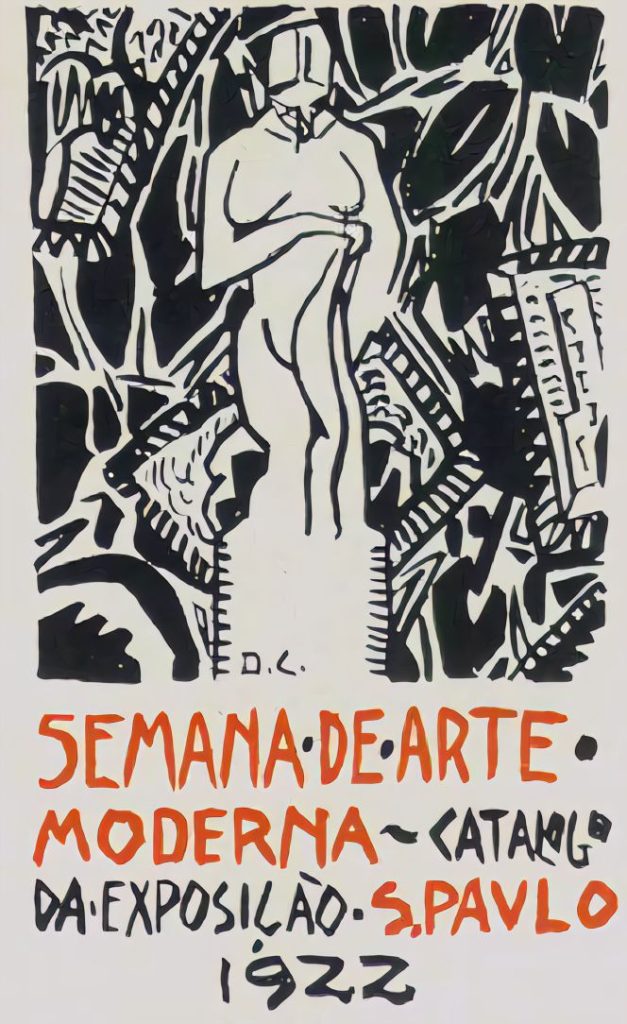
(For public domain usage rights see: https://en.wikipedia.org/w/index.php?curid=19494827)
For the people of Brazil, 1922 was a landmark year. It marked a full century of independence from Portugal – and it was also the year that put Brazilian art on the international map. An idea grew up from the artists’ studios of São Paolo: to dedicate a week to modern art, to run alongside the government-organised centenary celebrations.
For seven days, artists constructed, deconstructed, performed, sculpted, gave lectures, read poetry and created some of the most avant-garde works ever seen in Brazil. The emphasis of the week was modernism – lectures about modern art were given, new styles of music were played and difficult poems were read aloud. Among the works showcased at the Modern Art Week was poetry by Mario de Andrade, controversial art nouveau paintings by Di Cavalcanti (an artist associated with the English decadence movement and Oscar Wilde) and sculptures by Victor Brecheret. These were rounded, strong monumental figures with an emphasis on naturalism and anatomy – figures that seemed too human and too sexual to a world as yet unused to ‘modern’ art. […]
First published on BBC Culture on 10th October 2014. Read full article online.